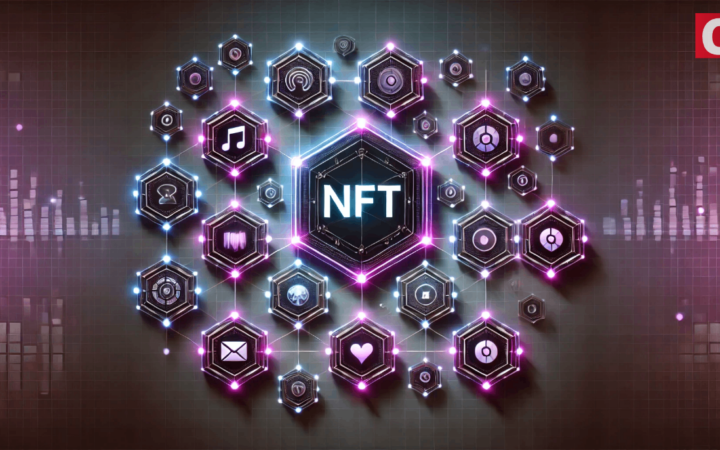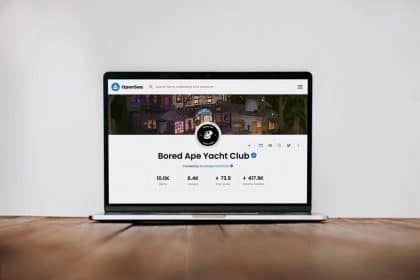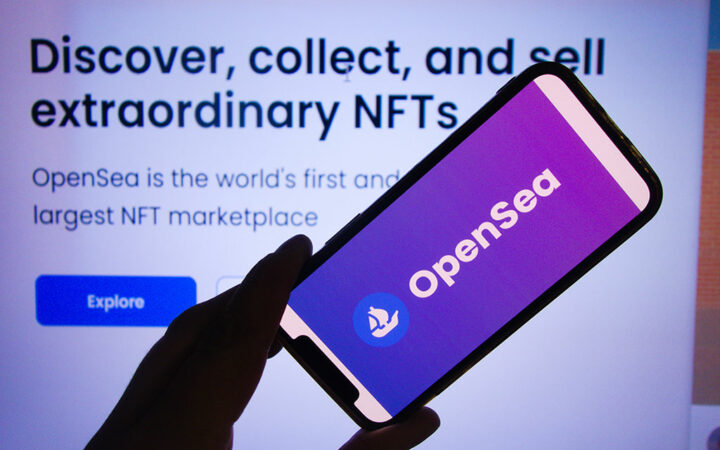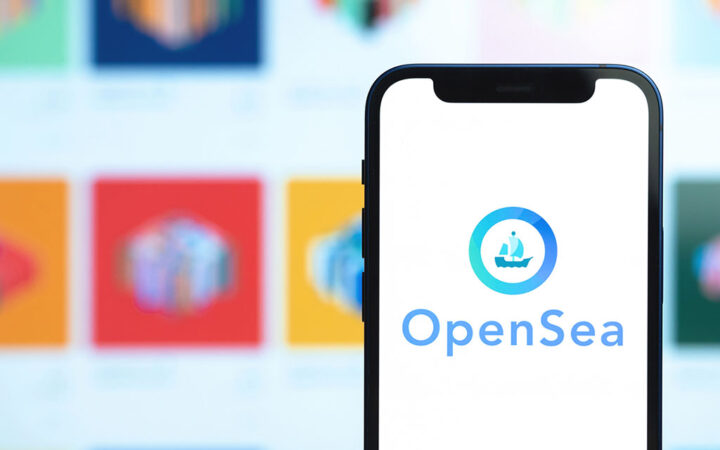
The Darkside of OpenSea: Insider Trading, Frequent Failures, Scams, Piracy

When coming to NFT trading platforms, Opensea is definitely on the list. Its trading volume keeps soaring as NFTs gradually gain popularity even beyond the crypto space.
Total transaction volume on Opensea has surpassed $30 billion according to relative data, which means it has generated $750 million in fees since its launch in 2018.
However, Opensea, which has generated huge revenue from NFT projects and users, is beginning to corrode the Web3 world.
In recent years, Opensea has suffered an increasing number of failures, resulting in unexpected sales of some expensive NFTs in multiple users’ wallets; Furthermore, bugs in its smart contract once made users’ NFTs vulnerable to hackers, with the security being questioned; Opensea’s employees took advantage of their authority to conduct insider trading, thus undermining the market order; It charges high fees but doesn’t help drain traffic and provide copyright protection for projects, causing rampant piracy; Opensea has been plagued by numerous scams causing tremendous losses for users.
In view of this, the market needs a new tool to solve the dilemma and truly connect players with the market to propel NFTs into the next phase of development.
OpenSea Comes Back to Bite Web3
The Opensea founding team seized the moment to create the first NFT market on Ethereum. However, with the entire crypto finance entering bear market and NFTs still in the early days, it wasn’t until August in 2018 that Opensea actually completed its first transaction. After two years of tepid performance, Opensea has actually taken off with a significant increase in transaction volume since the NFT craze started in 2021.
There is no doubt that OpenSea possesses its advantages to catch on in the market, like providing the infrastructure to mint and trade NFTs, simplifying the complex process involved in managing and monetizing NFTs. Before creating NFTs on OpenSea, users do not need to know how to code and there are no technical requirements to use its trading interface. In short, OpenSea is an ideal option for beginners because all the core processes are very simple and can be executed seamlessly.
Furthermore, there are no gas fees for minting NFTs on OpenSea and they will be on chain and charged with fees only when users successfully sell them.
Meanwhile, with trading volume increasing, some inherent drawbacks of Opensea have been exposed, gradually coming back to bite NFT projects and users.
First, frequent failures caused damage to user assets. In January this year, Opensea was exposed to a listing vulnerability, which was exploited by hackers to gain more than 150 ETH, with NFTs like Bore Ape Yacht Club, CoolCats, CyberKongz and others affected. Since then, Opensea has managed to fix the problem, including sending email alerts to users, only to cause more NFT losses. The attackers usually observe the network transactions and conduct front-running before the users cancel them, thereby obtaining low-price NFTs.
Second, Opensea employees are suspected of insider trading, disrupting the market order, which may lead to regulatory dilemma for NFTs. According to reports, the U.S. Attorney for the Southern District of New York recently charged and arrested Nathaniel Chastain, a former product manager at OpenSea. The 31-year-old suspect “took advantage of confidential information about which NFTs would appear on OpenSea’s homepage for personal financial gain”, said the prosecutors.
Third, the centralized governance model with constantly changing rules affecting the creation of NFT projects. Opensea is more like a Web2 company instead of Web3 project, as the team has always adopted a centralized governance model, leading to some problems. In January of this year, the team temporarily changed its policy on NFT creation, with the initial exemption of gas fees turning into a limit of only 50 NFTs minted without gas fees; The decision was cancelled after users complained bitterly.
Fourth, piracy and scams are rampant. While other platforms focusing on art NFTs often have restrictions on creators, Opensea doesn’t set any barriers for them, truly inspiring creative enthusiasm but also bringing about piracy problem. Once a popular project has launched, there will be dozens of copycat and pirated projects appearing on Opensea, causing users to buy fake NFTs by accident.
What’s more, various scams and frauds can be found on Opensea. Some scammers will airdrop fake NFTs to users’ wallets, and these NFTs will be displayed on OpenSea; Once the users click on the NFTs for interaction, the phishing links will be triggered, resulting in the loss of wallet assets. Over the past year, these scams have intensified while Opensea takes no actions.
At present, there are no laws regulating NFT transactions in the United States, Canada, etc. But as Opensea’s problems pile up and come to the attention of regulators like the SEC, the legal gap will be filled sooner or later. Once NFTs are identified as securities, the future of the NFT market will directly be affected.
MOJOR Enables NFTs to Drain Traffic for Projects
Opensea, by far the largest NFT trading platform globally, has made a fortune over the past few years.
OpenSea’s revenue mainly comes from collected commissions, with a 2.5% service fee charged on each transaction. Figures indicated its total transaction volume topped $10 billion for the first time last November, surpassed $15 billion in January, and currently has exceeded $30 billion. By one count, Opensea has generated $750 million in fees since its launch in 2018, far more than any “unicorn” companies.
In fact, Opensea’s fees are quite high in the Web3 world in contrast to centralized trading platforms, which usually charge 0.2% transaction fees, and some of them currently return service fees to the users, while Opensea doesn’t take any measures throughout.
Claiming to be a cross-chain, cross-category, cross-project comprehensive NFT trading platform, centralizing user traffic and bringing more exposure to NFTs, Opensea actually does not provide obvious traffic support to new project communities, most of whose life cycle is less than one week. According to Opensea’s various transaction ranking lists, only those at the top of the lists will be noticed, while new projects will always be at the bottom of the lists with low attention, bringing trade volumes to Opensea instead.
Even for major mature projects, Opensea doesn’t bring much new traffic while increasing transaction restrictions instead. If a user takes a fancy to an NFT in the community, he/she still needs to jump to an external link like Opensea to complete the transaction. Once the collection is not listed for sale on Opensea, users are unable to contact the owner directly through the address to obtain the NFT.
The NFT communities need a new tool to solve Opensea’s problems, and MOJOR has emerged as the times require.
MOJOR is a decentralized community application for Web3, designed to allow anyone to create and own a community by minting NFTs. Learning from the Discord community information architecture, MOJOR adds bots for Web3 application scenarios. Users can communicate with each other, complete transactions, arrange DAO governance and fulfill other Web3 needs through a series of bots in MOJOR.
For example, if a user wants to buy BAYC #6666 NFT, he or she can directly search for that address in the BAYC community and chat with its user to make an offer. For the whole chat process is run on chain, the social identities of the buyer and seller (email address etc.) will not be exposed, which effectively protects the privacy of the transaction.
When an agreement is reached, both parties may trade through NFTswap, one of the bots in MOJOR, without being redirected to Opensea. It is worth noting that NFTswap currently does not charge transaction fees, and users only need to pay on-chain gas fees to complete transactions, which is a significant improvement over Opensea. NFTswap will support multichain trading in the future as well.
With NFTswap, the NFT communities have their own exclusive trading platform, where gathers almost all NFT holders and potential fans. Completing transactions within communities directly through smart contracts will greatly improve the efficiency and liquidity of NFT transactions, as well as the communication between sellers and buyers and the success rate of transactions.
Conclusion: Competition in the NFT Market Will Never Stop
With the continuous upsurge of NFTs, various new NFT platforms has sprung up one after another, establishing a pattern of “only super platform and multi-great platforms”.
As the competition heats up, traffic, discourse power and communities will going to be the topics that NFT trading market needs to continuously pay attention to. Whoever can solve these problems is bound to become the next bellwether.
It is believed that these up-and-coming NFT platforms will further enrich the value of NFT assets, and the future of NFTs will not be limited to JPEGs.
Disclaimer: This publication is sponsored. Coinspeaker does not endorse or assume responsibility for the content, accuracy, quality, advertising, products, or other materials on this web page. Readers are advised to conduct their own research before engaging with any company mentioned. Please note that the featured information is not intended as, and shall not be understood or construed as legal, tax, investment, financial, or other advice. Nothing contained on this web page constitutes a solicitation, recommendation, endorsement, or offer by Coinspeaker or any third party service provider to buy or sell any cryptoassets or other financial instruments. Crypto assets are a high-risk investment. You should consider whether you understand the possibility of losing money due to leverage. None of the material should be considered as investment advice. Coinspeaker shall not be held liable, directly or indirectly, for any damages or losses arising from the use or reliance on any content, goods, or services featured on this web page.




